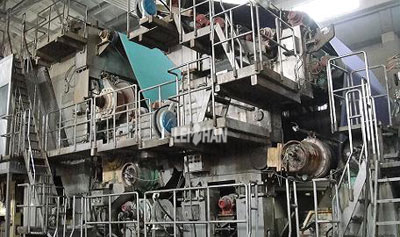Paper Machine Press Section Dewatering Process

Paper machine press section dewatering have a great significance for improving the paper machine speed and reducing the dryer section steam consumption in paper making process. The paper sheet void volume is reduced after squeezing the moisture in the paper sheet during the pressing process, and a certain degree of fiber compression occurs at the point where the fiber is in contact with the fiber, the pressed pressure contributes to the uniform distribution of moisture in the entire paper sheet.
Press Section Dewatering Process
1. The first stage of the paper sheet and the felt drains the air until the paper sheet reaches the saturated water and no more residual air, at this stage the water pressure in the paper sheet is not large and the dryness does not change.
2. In the second stage the paper sheet is saturated with water, the water pressure in the paper sheet is raised, the water is transferred from the paper sheet to the felt, when the felt is saturated, the water is discharged from the felt, the second stage is until the middle of press section, the total pressure reached the highest.
3. In the third stage, the press slot began to expand and further dehydrated until the water pressure in the psper sheet was reduced to zero, at this time the paper dryness is largest.
4. The fourth stage of the paper and felt began to expand, the paper become into an unsaturated state, this time with the role of capillary action, paper vacuum or gap wet-back mechanism, and some water back to the paper sheet. The press export paper sheet should be separated from the felt as soon as possible to reduce the wet-back effect.
Press Section Dewatering Influence Factors
1. The pressure applied to the unit area;
2. The duration time of the press pressure;
3. The number of press device;
4. The structure of the press roll;
5. The characteristics and state of the press felt;
6. Water viscosity (or temperature);
7. Paper characteristics, including small fiber content, additive concentration, wet paper air permeability and so on.










